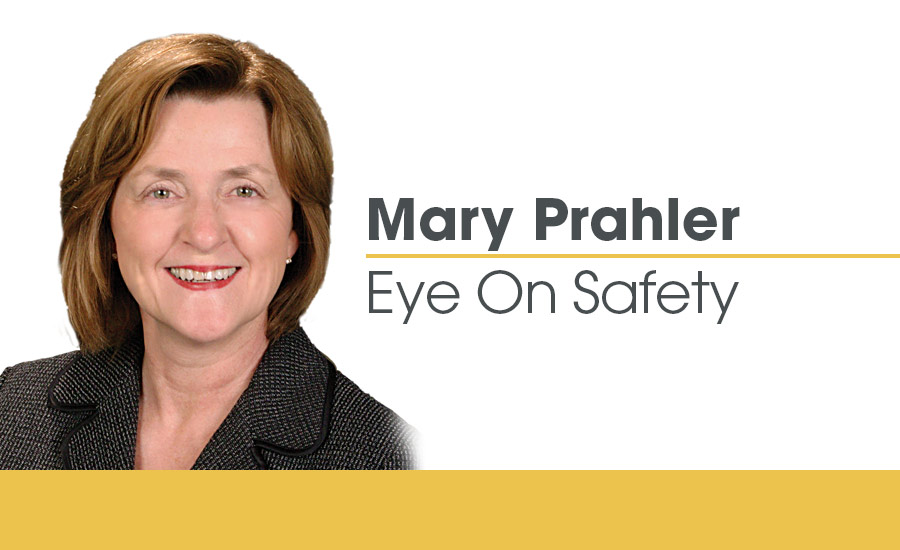The importance of safety in business goes beyond compliance.
Safety is a value, an opportunity to engage all employees in a process that prevents harm, enhances productivity and contributes to profitability. High-performing businesses have a common core of commitment to safety and continually evaluate their processes to identify and reduce risk with a goal of zero incidents.
Assistant Secretary of Labor Dr. David Michaels cites a National Safety Council report where workplace injuries and illnesses cost the U.S. economy $198.2 billion a year.
“That’s more than half-a-billion dollars each day,” he says. “Employers who invest in injury and illness prevention programs can expect significant cost savings in addition to reducing fatalities, injuries and illnesses. Workplace safety is not only the right thing to do for your workers; it’s the right thing to do for your business.”
The major elements of an effective occupational safety and health program include leadership and employee engagement, workplace analysis, risk reduction, safety and health training, and evaluation and measurement of effectiveness of the program.
Leaders of a business create a culture of safety by communicating a positive vision from the top down, modeling safe practices and investing time and money in safety. This will provide the motivation and resources for the pursuit of a safe and healthy workplace. Leaders who engage employees in the safety process will find that employees will develop an appreciation of the importance of safety, a commitment to the process and a willingness to accept responsibility for the program. Morale will improve, productivity will increase and total cost of labor will decrease in the workplace.
Workplace analysis addresses the physical workplace and processes for work performance to identify existing hazards, conditions and operations where changes might occur to create hazards. Both leadership and employees should be involved in this analysis process. The process is initially done to kick off the safety program and will result in a safety management system comprised of a set of processes and tasks designed to ensure safety goals are met.
The analysis also must continue on a regular basis through documented site inspections designed to carefully survey the workplace to identify hazards which may have developed. Some of these hazards may be resolved on the spot while others may require more extensive intervention and planning. Leaders also must establish a method for employees to communicate to leadership hazardous conditions with the expectation the condition will be evaluated and corrective measures taken. Key benefits found with a strong safety management system include leadership accountability for safety goals and vision, incorporation of safety into everyday operations and reduced injuries and deaths.
Hazard control
Risk always will be present in the workplace, but leaders and employees can work together to reduce risk by identifying and implementing best practices, controlling hazards, conducting root-cause investigation of accidents and near misses, and implementing remediation to correct the hazard causing the accident.
The four ways to control a hazard include elimination, engineering controls, administrative controls and personal protective equipment. These methods are known as the “hierarchy of control”because they should be considered in the order presented.
Elimination is removal of the hazard from the workplace or substituting hazardous materials or machines with less hazardous ones. Engineering controls include designs or modifications to plants, equipment, ventilation systems, and processes that reduce the source of exposure. Administrative controls alter the way the work is done, including timing of work, policies and other rules, and work practices such as standards and operating procedures (including training, housekeeping, equipment maintenance and personal hygiene practices). Personal protective equipment is worn by workers to reduce exposure to the hazard. The benefits for reducing risk will be realized in greater job satisfaction and increased productivity and profit.
Safety and health training is an integral part of the safety program. Training must be provided at the time of hire or whenever a temporary employee comes to a jobsite to perform work. Training must address the safety and health responsibilities of all personnel and be incorporated into other training and job performance evaluations.
Employees must understand the hazards they may be exposed to and how to prevent harm to themselves and others from hazard exposure. Supervisors must reinforce employee training through performance feedback and, if needed, enforcement of safe work practices. Safety training should be incorporated regularly into the work environment in order for safety to be kept in front of employees and to provide a forum within which employees can discuss how specific safety training can be incorporated into their daily work activities.
Complacency can set in if the safety and health program is not reviewed on a regular basis and continuous improvement to the program is not sought. It is critical that leaders not only internally measure their progress toward safety goals and performance, but also seek
opportunities to benchmark against other companies to identify areas for improvement and collaborate to identify best practices.
Employers that implement comprehensive safety and health programs can substantially reduce the number and severity of workplace injuries and illnesses. These programs can transform workplace culture, leading to higher productivity and quality, reduced turnover, reduced costs and greater worker satisfaction.
HELPFUL LINKS:





